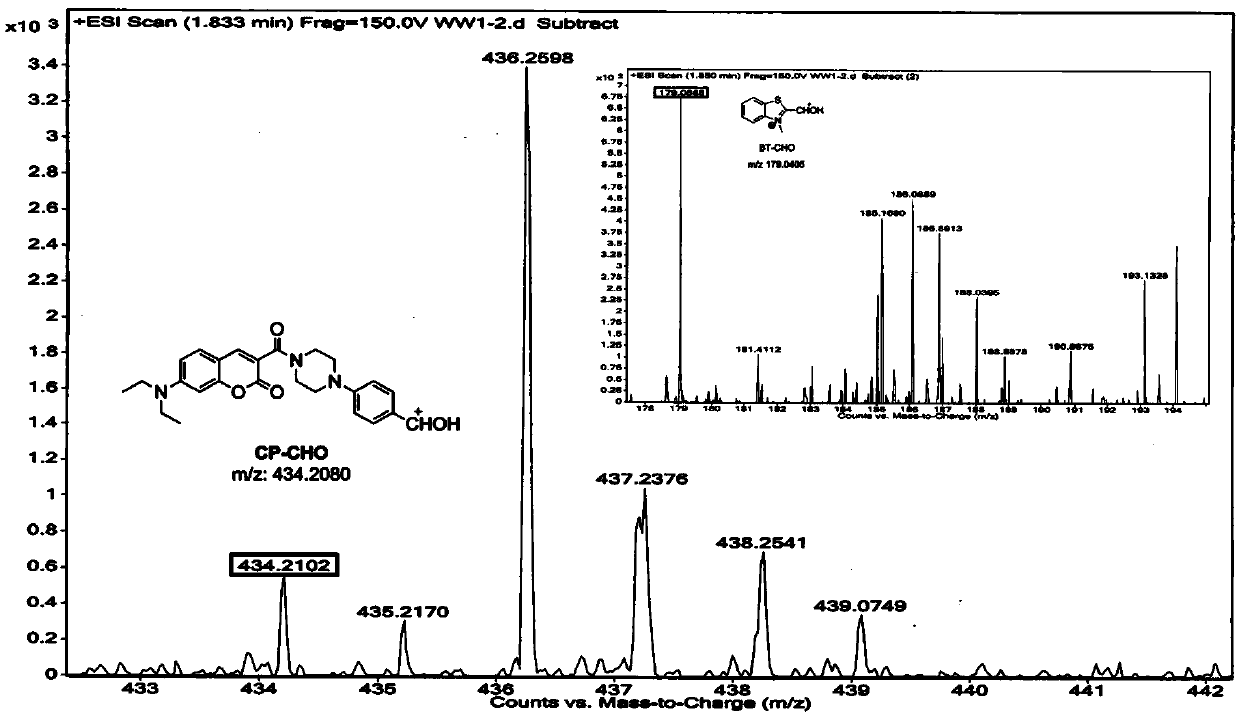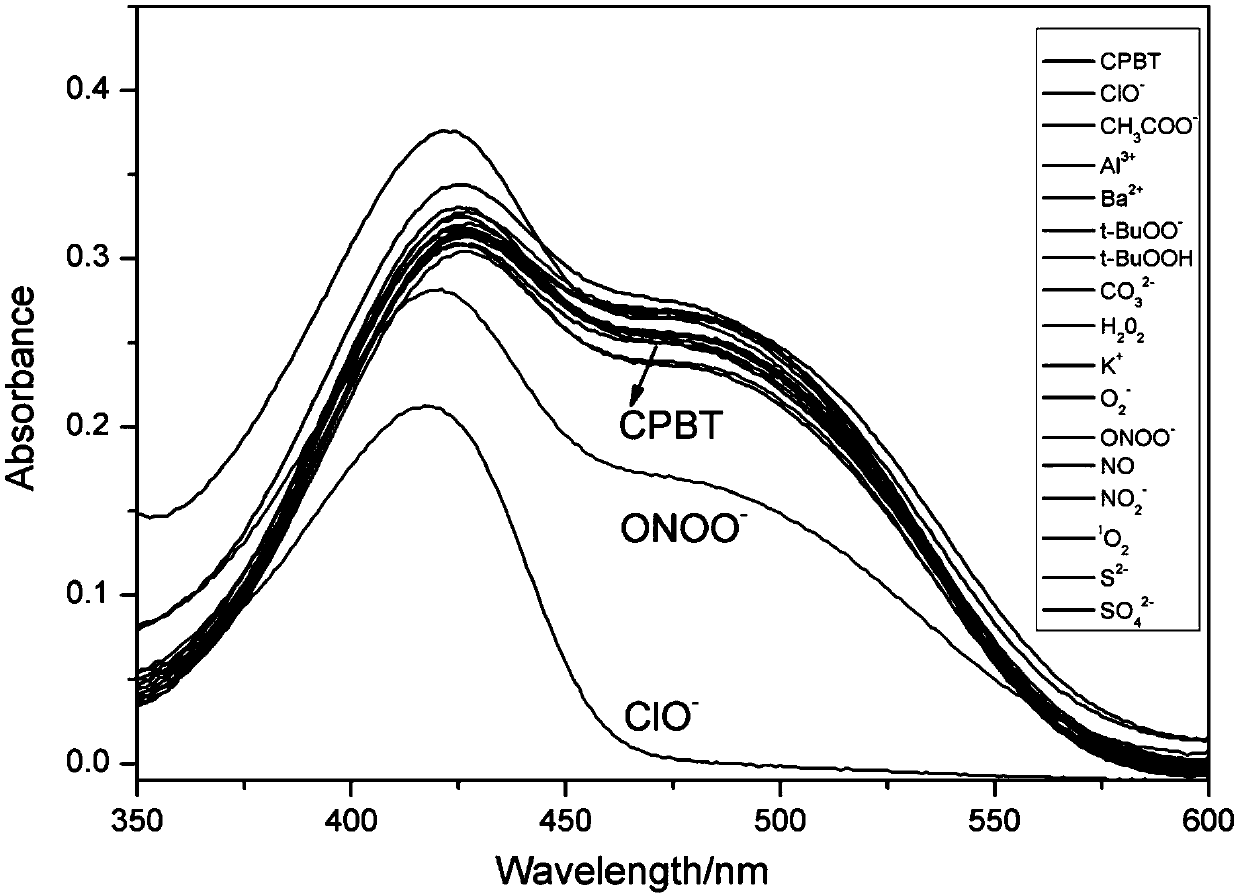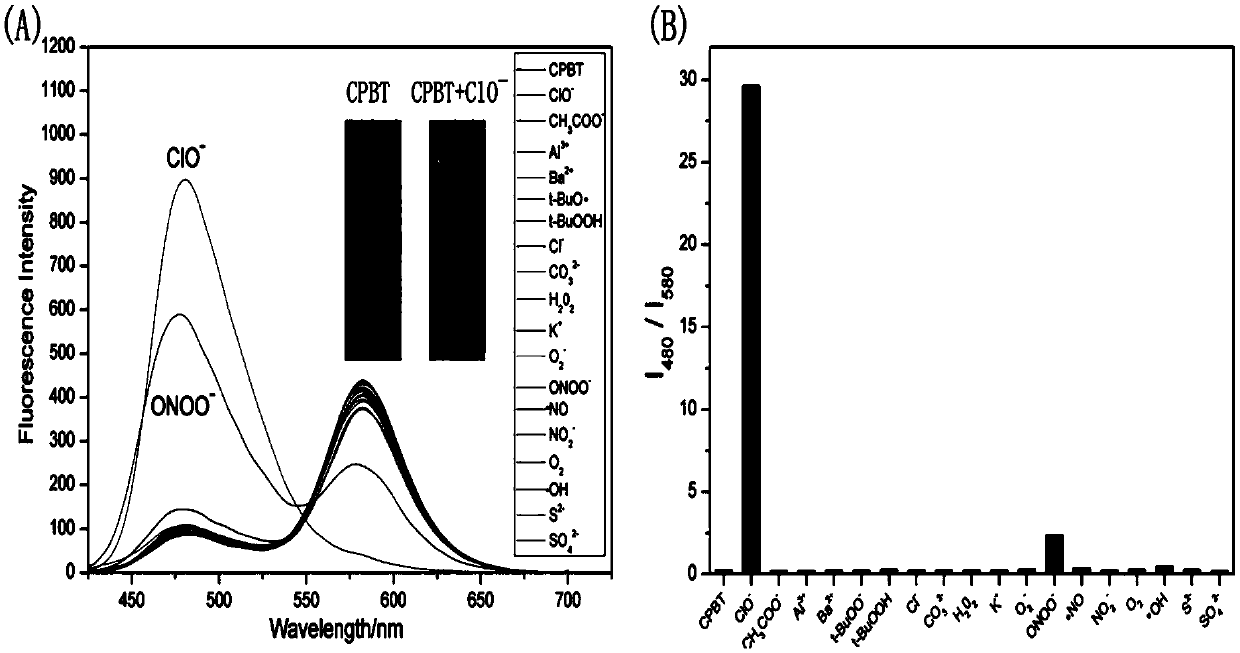A Mitochondria-targeted Proportional Fluorescent Probe for Hypochlorous Acid Based on Fluorescence Resonance Energy Transfer Mechanism and Its Application
A fluorescence resonance energy, ratio fluorescent probe technology, applied in the ratio fluorescent probe and its application, the hypochlorous acid ratio fluorescent probe field, can solve the patent, limitation, and lack of structural diversity of the hypochlorous acid ratio fluorescent probe. issues of sex
- Summary
- Abstract
- Description
- Claims
- Application Information
AI Technical Summary
Problems solved by technology
Method used
Image
Examples
Embodiment 1
[0025] 4-(4-(7-(diethylamino)-2-oxo-2H-benzopyran-3-carbonyl)piperazinyl-1)benzaldehyde (1) was synthesized by a known method, and then the compound 1 is reacted with 3-methylbenzothiazole salt to obtain the mitochondrial-targeted hypochlorous acid ratio fluorescent probe based on the fluorescence resonance energy transfer mechanism of the present invention. The probe can undergo an oxidation reaction with hypochlorous acid to release a fluorescent 7-diethylaminocoumarin derivative 1.
[0026] The reaction formula is as follows:
[0027]
[0028] 4-(4-(7-(Diethylamino)-2-oxo-2H-benzopyran-3-carbonyl)piperazinyl-1)benzaldehyde (1,20mmol), 2-methyl Benzothiazole salt (2, 20 mmol) was refluxed in 50 mL of absolute ethanol, reacted for 3 hours, cooled to room temperature, concentrated, and subjected to silica gel column chromatography to obtain a red powder of the probe (3) of the present invention, melting point: 182 ° C, yield The rate is 87%.
[0029] H NMR spectrum deter...
Embodiment 2
[0033] The PBS / DMF buffer (pH=7.0, v / v=9:1, 10μM), quantitatively add 10μM KNO 3 ,Ba(NO 3 )2 ,AlCl 3 ,OCl - ,t-BuO ,H 2 o 2 ,O 2 - ,OONO - ,NO·, 1 o 2 ,t-BuOOH,NaNO 2 , Na 2 CO 3 ,NaCH 3 CO 2 , Na 2 S,NaSO 4 Fluorescence spectrophotometry and UV spectrophotometer tests were carried out after 3 hours of action, which showed that the probe had good selectivity to hypochlorous acid, and the comparison before and after adding hypochlorous acid showed ultraviolet absorption and fluorescence intensity of two emission wavelengths significant changes, see figure 2 , 3.
Embodiment 3
[0035] Intracellular fluorescence imaging:
[0036] RAW264.7 cells were first cultured with lipopolysaccharide (LPS, 1 μg / ml) for 12 h, then added phorbol ester (PMA, 1 μg / mL) in serum-free medium to continue incubation for 30 min, and then the probe (2 μM ) for 30 min. After washing the cells with PBS (pH 7.20) for 3 times, image them with a laser confocal microscope (LSM 700), collect fluorescence in the wavelength range of 405-550nm (blue light) and 560-700nm (red light), and obtain bright field images, fluorescence The image and the superimposed image of the two were then counted (*p Figure 4 .
PUM
 Login to View More
Login to View More Abstract
Description
Claims
Application Information
 Login to View More
Login to View More - R&D
- Intellectual Property
- Life Sciences
- Materials
- Tech Scout
- Unparalleled Data Quality
- Higher Quality Content
- 60% Fewer Hallucinations
Browse by: Latest US Patents, China's latest patents, Technical Efficacy Thesaurus, Application Domain, Technology Topic, Popular Technical Reports.
© 2025 PatSnap. All rights reserved.Legal|Privacy policy|Modern Slavery Act Transparency Statement|Sitemap|About US| Contact US: help@patsnap.com



